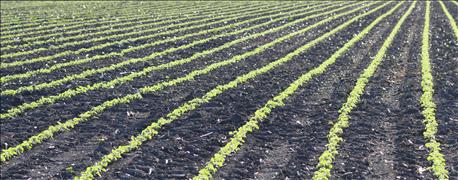
Editor’s note: This is the second article in a three-part series on farmed wetlands.
We’re continuing our scenario this month: Let’s say you want to install a new drain tile system on your farm. However, the Natural Resources Conservation Service has issued a "certified wetlands determination" that says a portion of your farm is a “farmed wetland.” How do you appeal that decision?
Is it a farmed wetland? Three qualifying criteria include:
• The area must be ponded for seven days or longer.
• The area must be saturated for 15 days or longer during the growing season of more than half of the years.
• The area must have wetland indicator plants and hydric (wet) soils.
All three of these criteria must be met for a piece of land to be declared a farmed wetland. If your land doesn’t meet all three, you may be able to appeal the decision. In our experience, the saturated soil conditions are the most likely avenue for appeal, because the NRCS uses aerial photos to estimate likely saturation.
To plan for an appeal, you must first gather some information.
1. Plants and soils. Engage a plant specialist to determine whether wetland indicator plants are growing in that area, and use the county soil survey to determine if the soils are hydric.
2. Tile discovery. Find all existing tile in the supposed wetlands area and determine tile size, depth, slope and flow capacity. Unfortunately, without good maps, the only way to do this is to dig exploration trenches through your property. Mark all of your findings carefully and ask NRCS to inspect your findings. Take photos and have unbiased witnesses verify your work.
3. Tile outlets. Determine how your tile system outlets. Document the downhill tile system via maps or investigation. Determine if the outlet tile is adequate and whether surface flow contributes to draining the area.
4. Surface drainage. Determine the surface area that drains into the supposed wetlands area. U.S. Geological Survey topographic maps can help here, as well as topographic surveys made by qualified people using GPS methods.
5. Water flow. Perform a “scope and effect analysis” to determine if the tile and surface waterways as installed are adequate to remove the water that flows into the supposed wetlands area in a timely manner. Drainage guides can help, but the final work may need to be done by a qualified drainage engineer familiar with all of the engineering and hydrology formulas used by NRCS.
When you have gathered all of this data and analyzed it, you will be ready to decide how to approach the mitigation or appeal process. The ponding and saturation requirements are absolutes for the property to be considered a farmed wetland. So are the wetland soil and wetland plants determinations. If the existing tile system, as installed, has adequate drainage capacity to overcome the saturated conditions, you have what’s known as “prior converted wetlands” and not “farmed wetlands.” If even one of the three criteria is not met, can you proceed with a potentially successful appeal.
Our final advice: Remember, the NRCS does not have to prove that it is correct. You have to prove that the NRCS is wrong.
Moody is president of Heartland Ag Group; Wauthier is vice president of Berns, Clancy and Associates; Wilke is a partner with Barber, Segatto, Hoffee, Wilke and Cate. All are members of the Illinois Society of Professional Farm Managers and Rural Appraisers, whose members regularly contribute to this column. Have a farm management question or topic you’d like addressed? Email Carroll Merry at [email protected].
About the Author(s)
You May Also Like




